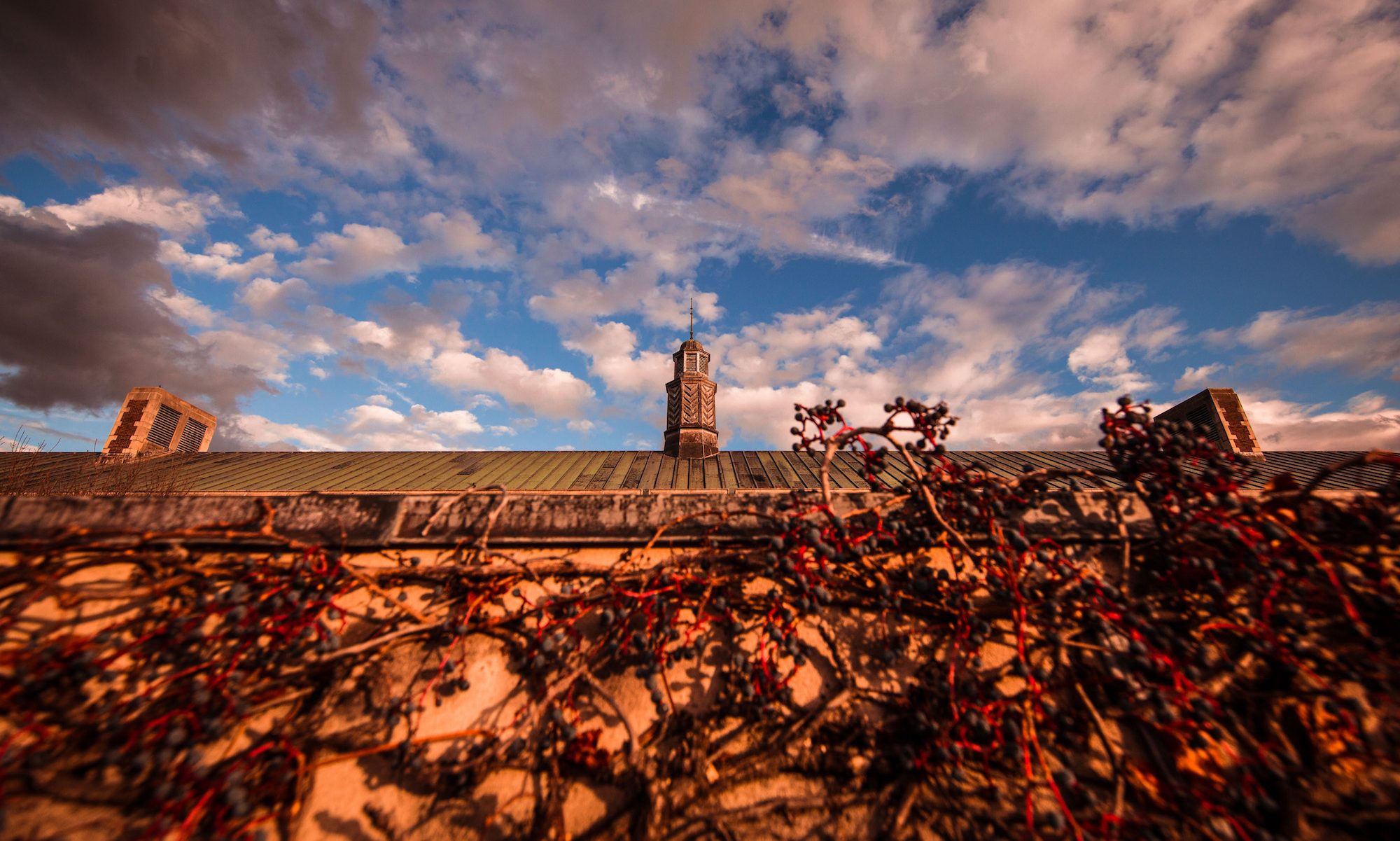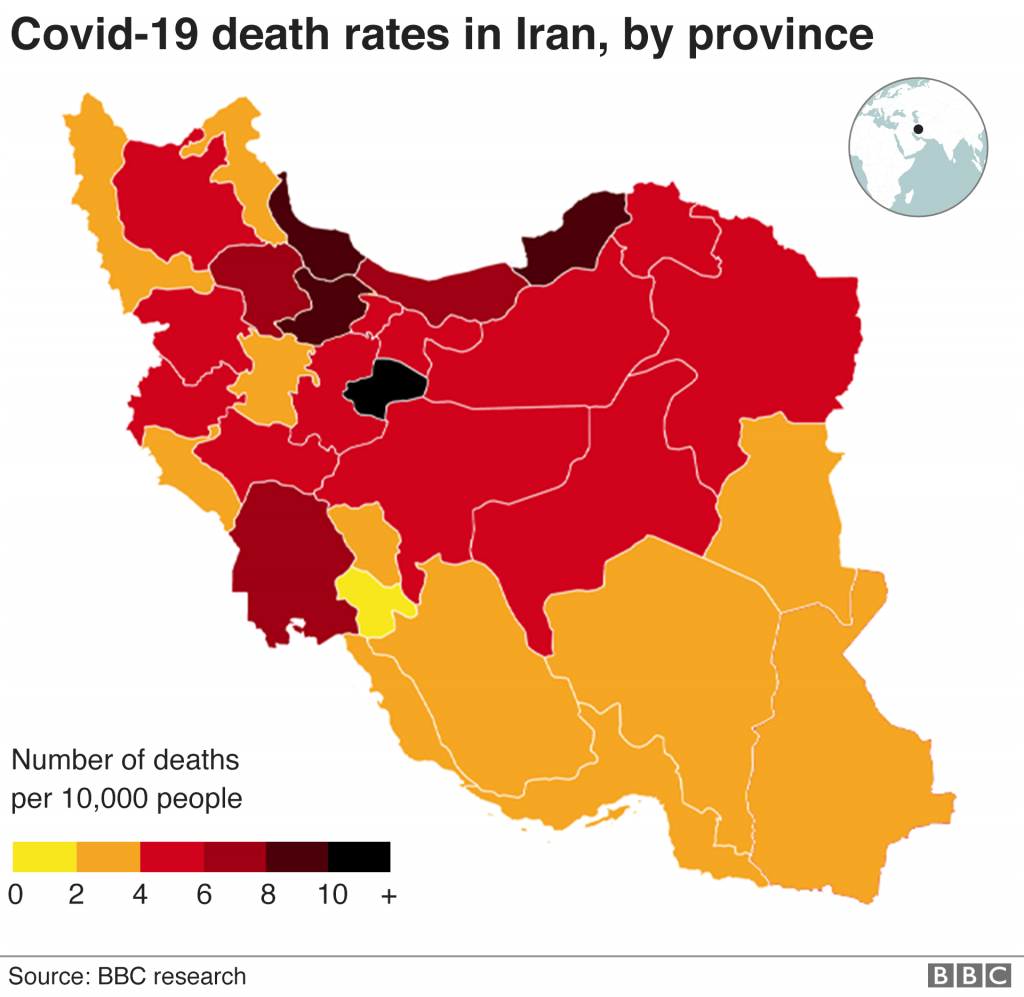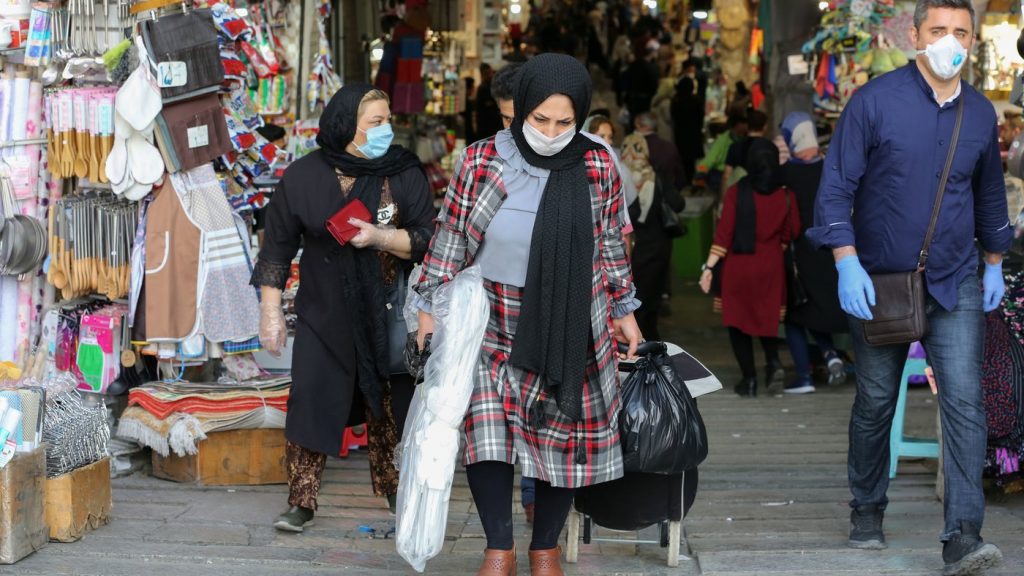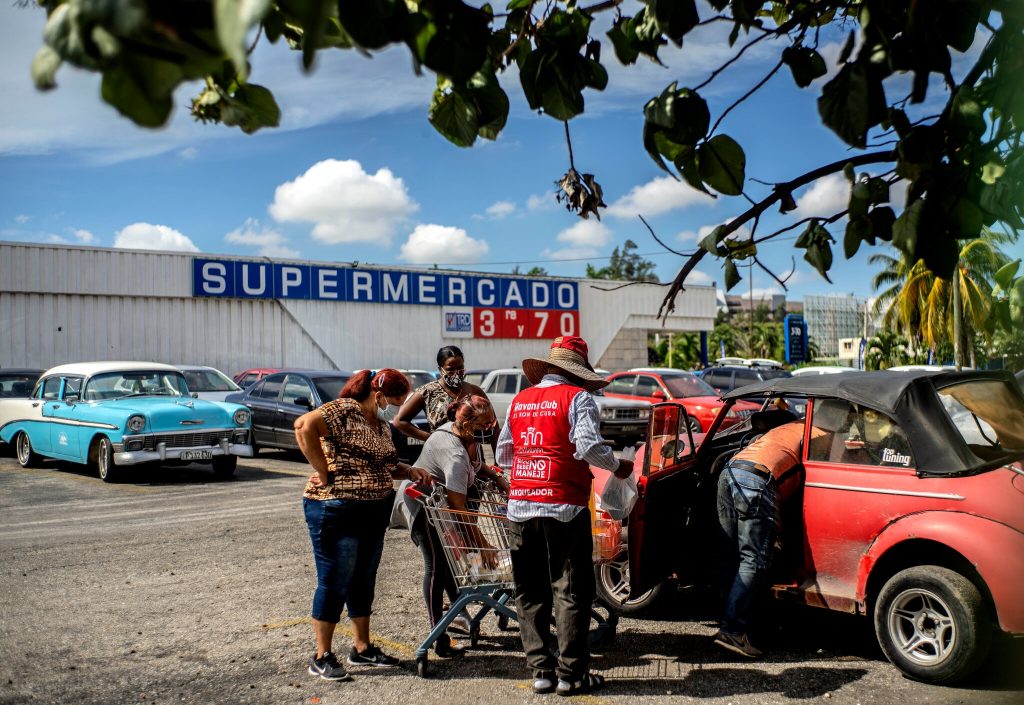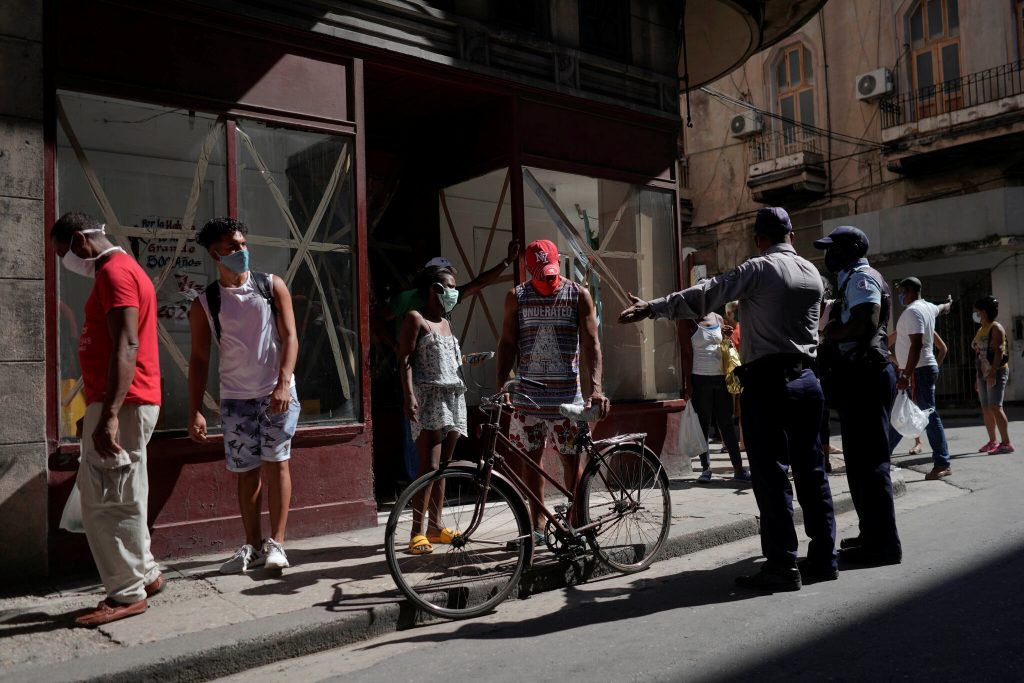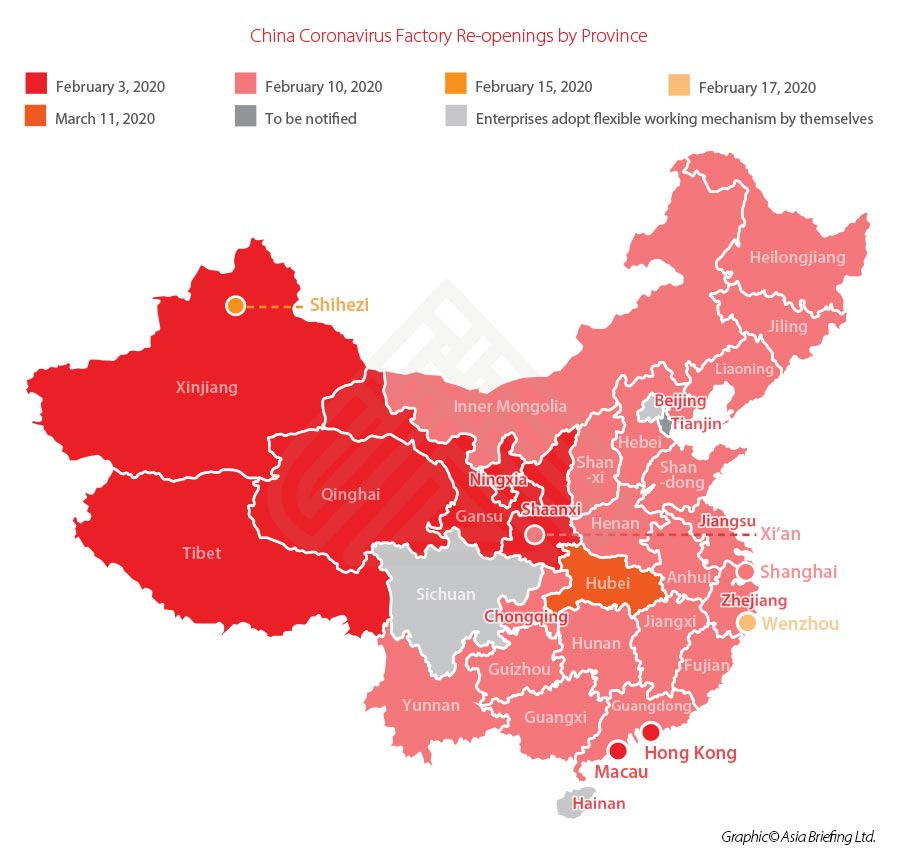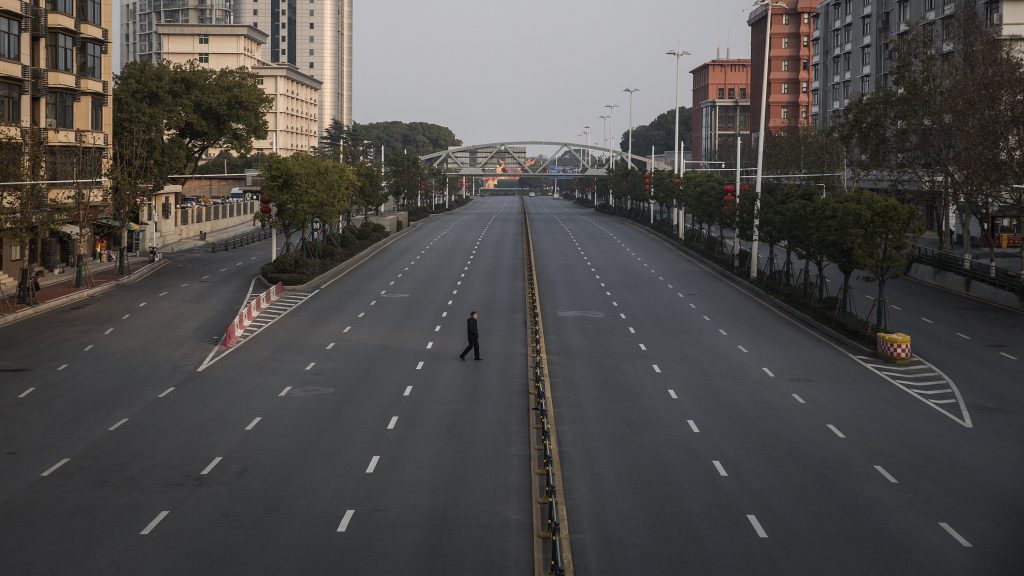As Covid-19 has infected millions of people globally, governments have scrambled to stop the spread of the virus. Taking a look at countries like China, Cuba and Iran can provide valuable context about the lack of political, economic, and social stability under authoritarian regimes, despite their strong-handed governing structures.
The Coronavirus pandemic has created an urgent need for authoritarian regimes to strike a balance between the human rights of their citizens and their policies to control the spread of the virus. The struggle of some of the most politically domineering regimes inability to control the pandemic provides evidence for why it has been so difficult to manage the Coronavirus outbreak globally.
Iran
Mikaela Burke is majoring in Political Science and minoring in Conflict Studies at SUNY Geneseo, expected to graduate in 2022.
Political
The Islamic Republic of Iran’s first cases of Coronavirus were confirmed on February 19, 2020. Individuals that were critical of the Iranian government’s response claimed that they had not acted quickly enough. In a cabinet meeting on February 26, Iranian president Hassan Rouhani claimed that the government would only mandate quarantine for individuals rather than whole cities. Rouhani stated, “We have no plan to quarantine any district or any city. We only quarantine individuals. If an individual has early symptoms, that person must be quarantined” (Associated Press, 2020). In the coming weeks, however, the government began to implement further restrictions on public gatherings. The Iranian government imposed a full lockdown on the country on March 13. These restrictions came right before the Nowruz festival for the Persian New Year, which typically lasts 15 days, or into April of 2020. The government also closed shopping centers and schools as well as important religious sites (Reality Check Team, 2020). It’s possible that one of factors in the Iranian government’s slow response is because it’s primarily run by Supreme Leader Ali Khamenei and the Guardian Council. Khamenei and the individuals in the Guardian Council are chosen for their Islamic scholarship. Compounded with the nature of an authoritarian regime, it’s possible that they did not want to go into lockdown so as not to close religious events and locations. In late April, restrictions began to loosen, though by mid-May, cases spiked again, causing Iran’s second wave of Covid-19 (Reality Check Team, 2020). In November of 2020, the third wave of Covid-19, the Iranian government went into its most restrictive lockdown yet. The government began color-coding zones of Coronavirus exposure and proposed restrictions depending on what zone each region fell into. The exposure severity is defined from least to greatest by white, orange and red. Restrictions included curfews and vehicles with “non-local” license plates were restricted from going into red and orange regions (Motademi, 2020).
Economic
Despite the newest lockdown restrictions, Iranian citizens have continued to keep businesses open as Iran’s economy has been rendered fragile due to heavy sanctions that have been imposed on the country as well as a global decrease in the purchase of oil, Iran’s primary source of government funding. This lack of funding has further been a detriment to Iran’s Covid-19 response. Regardless, new programs were implemented in Iran, in order to ensure proper financing of the pandemic. One of these implementations included allocating five billion Tomans (about 1.2 million dollars USD) to the National Headquarters for the management of the Covid-19 outbreak and Iranian medical universities to combat the pandemic. Furthermore, “another set of policies was the allocation of 100 billion Tomans and insurance subsidies to the Ministry of Health and Medical Education to prevent the spread of the coronavirus” (Bakhtiari 2020). In order to supplement funding for Covid-19 relief, on April 15, the Iranian government began selling “residual shares in 18 companies (including 12 percent share of Social Welfare Fund, the largest public company)” and were able to gain approximately 235 trillion rials, or approximately 0.8 percent of the national GDP, for public funding (IMF 2020). Throughout the remainder of the pandemic, other government shares to companies were sold and “13 percent of business applicants affected by the pandemic has received part of the aid package and 56.5 trillion rials ($245 million) have been paid from the National Development Fund of Iran” (IMF 2020).
Social
As with many countries, certain demographics of the population in Iran have been affected more by the virus than others. With an already strained healthcare infrastructure, many Iranians with disadvantaged or minority backgrounds struggled to access necessities such as food, medicine, and supplies. A spatial analysis study of the impacts of Covid-19 on different regions in Iran accounted for a variety of variables to determine the relationship between Covid-19 and “urbanization, aging population, education, average temperatures, number of physicians, and inter-province communications.” The study found that in geographic locations where multiple or all variables exist in higher concentrations, the rate of Covid-19 infection is also higher. More specifically, people over the age of 60 had higher rates of COVID in Iran and higher mortality rates. Furthermore, the data showed that “the spatial spread of COVID-19 has a relationship with population aging structures.” The higher rate of COVID can be attributed to both higher health risks as well as possible structural inequalities. Most of the variables related to this were found to increase rates of Covid-19 infection. However, one of the variables that proved to decrease the risk of Covid-19 was that of populations with higher literacy rates. The study suggests that this could be due to “attitudes towards public health measures.” To reduce the demographic barrier, the government began providing “monthly financial assistance” to disadvantaged Iranians. Some of the measures that have taken place to support Iranian citizens by the government include, “cash transfers to vulnerable households (0.3 percent of the GDP); and subsidized loans for affected businesses and vulnerable households (4.4 percent of the GDP).”
Cuba
Lynette Guaba is majoring in Psychology in the Pre-PA track at SUNY Geneseo, expected to graduate in 2023.
Economic
The pandemic has greatly affected the academic standing of many Cubans till today. COVID-19 and its political instability have affected the people and the island economically. The attitudes and lack of support from the government put into society has influenced political change. Cuba has been facing devastating economic stability within the island. The lack of response to helping the economy and its people survive and maintain healthy living standards has led the country to a food crisis. According to the article, “Cuba’s economy was hurting. The pandemic brought a food crisis,” has established that as they closed ways for travelers from continuing to travel to Cuba, tourist travel has drowned the island bringing it into one of the worst food shortages in 25 years. (Augustin, 2020) This led to large amounts of goods to be scarce in stores, and prices to be outrageous meaning it was extensively expensive for an average Cuban to even afford. The huge reliance on dollar stores has led to economic inequality. Meats were moving up high in price if not achieved early in time. Stores were charging Cubans in a currency that they could not earn. It was horrifying especially for those who are low-income or middle-income class households. All the food made available were often found only in government-run stores that are stocked with imports that charge in dollars. (Augustin, 2020)
Political
In this case, the government used people who had access to savings or got money from relatives/friends in exchange for food supply. This demonstrates a lack of care, responsibility and for the wealth and benefit of the sick or Cubans in need. This has led to a decrease in financial resources that can be put to manage control of this pandemic. This also can lead to an increase in the mortality rate for those who are seriously ill and don’t have access to medicine, care, or food in order to survive bringing the economy down. The government has warned its people that proper hygiene care, basic goods, and resources would be scarce and hard to come by. (Augustin, 2020) This can potentially cause a collapse in the health care system if continued. Although, it has been noted by Mr. Diaz-Canel that despite its hardships Cuba has successfully been able to manage the battle against COVID-19. With 11.2 million people, Cuba has over 5,000 COVID-19 cases and 115 deaths by far one of the lowest mortality rates. (Augustin, 2020)
Social
Although, to reduce cases Cuba has been working to implement quarantine buildings for those tested positive and guarding doors making sure nobody goes in or out 24 hours. Medical students are set to go door to door screening people daily. (Augustin, 2020) Cuba’s response to the pandemic is acting rapidly and including many policies to stop the spread of the virus so they can kickstart the economy again.
China
Alex Hillyard is an International Relations Major at SUNY Geneseo, expected to graduate in 2024.
Economic
China’s politics played a large role in their handling of the Corona Virus because their executive had enough power that he was able to shut down the country and control the spread of the virus. As of today China is down to 18 cases from its peak in march of just over 90,000 cases. China has only recorded 4,700 deaths and is currently already distributing a vaccine to over one million people who are at the highest risk of complications from illness. Part of the reason the Chinese government has been so effective in locking down the country as a whole is the overarching power of the executive. However, the country as a whole was not able to escape a stunt in economic growth. The immediate disruption that Covid 19 posed to small and medium sized firms in the international supply chain was one culprit of the lockdown and like many other countries the largest firms grew larger at the expense of smaller businesses during the pandemic. In recent months this has exaggerated to the point that almost eighty five percent of small to medium sized enterprises are expected to run out of money in the next three months.
Social
Beyond the speed in which the country was shut down the history of face mask use in China showed how effective mask wearing can be when properly implemented. The correlation between Taoist beliefs and masks had already presented an impact on the way that people looked at wearing masks, so the overall impact on the country presented a stark contrast to the reception that masks had in other parts of the world. A primary setback to recovery was the lack of communication between Chinese officials and the rest of the world during the first few weeks of study on the virus. In other countries (especially the U.S.) trust in China as a whole decreased as a result and made the road to recovery harder for everyone than it needed to be.
Political
Because President Xi is not only the president but also the General Secretary of the Chinese Communist Party as well as a few other high level positions he was able to institute and enforce lockdown orders quickly and effectively. This is the more positive side of the trade off of having one government figure with extreme power, however there have also been some trade offs as a result of this dynamic. One of the largest of them has been the extra authority granted to the national government after declaring an emergency. Because the Chinese government runs almost solely from the center outward, and policies are enforced by almost 44,000 medium and low level officials. Up until recently, effective decentralization has allowed regional officials to begin to implement policy on a small scale, but because of the widespread effects of the coronavirus, the government has tightened its control over the provinces in order to combat the pandemic. Granted the emergency was warranted, but since then the government has been able to crack down on dissenters and media sources more than before under the guise of public safety. Although this has been acknowledged by the CCP as an attempt to better control the pandemic, actions of President Xi in the past four years has indicated that this more of an attempt to take advantage of the fact that claiming more executive power can be excused under the circumstances.
